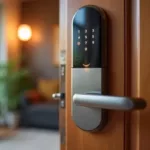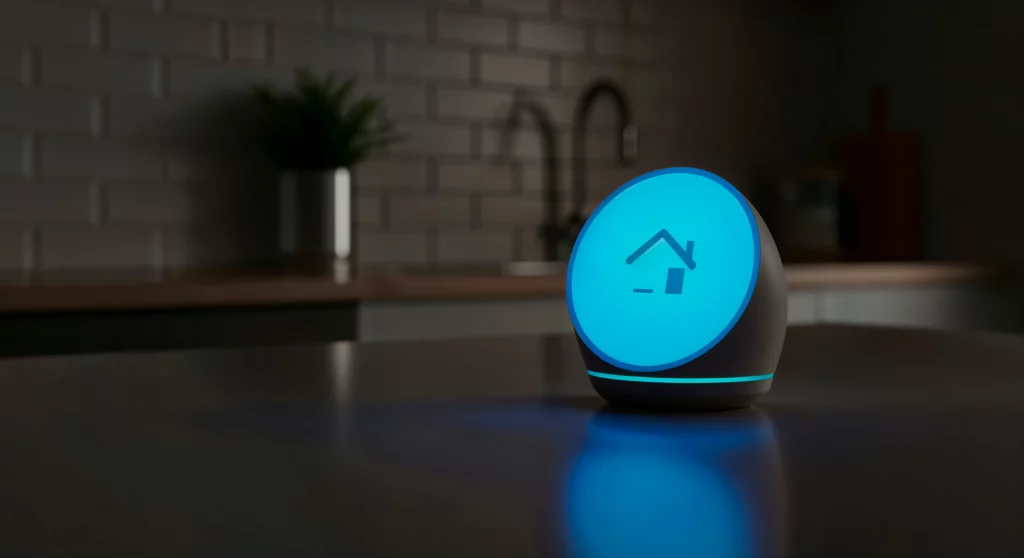Thinking about making your home smarter? Welcome to the future! Automating your home isn’t just about convenience; it’s about enhancing security, boosting energy efficiency, and simplifying your daily routines. Whether you’re a tech enthusiast or a smart home newbie, this smart home guide will walk you through the essentials to get your connected home up and running.
The Benefits of a Smart Home: Why Go Automated?
Before diving into the gadgets, let’s look at why smart homes are becoming so popular. In fact, the benefits are clear and compelling:
- Convenience: Control lights, thermostats, and entertainment systems with a tap or a voice command. For instance, you can dim the lights for movie night without ever leaving the couch!
- Security: Keep an eye on your property with smart cameras, receive alerts for unusual activity, and even simulate occupancy when you’re away.
- Energy Efficiency: Smart thermostats and lighting can learn your habits and adjust settings to save energy, consequently reducing your utility bills.
- Peace of Mind: Check if you left the garage door open or if the kids are home from school, all from your smartphone, no matter where you are.
Getting Started: The Foundation of Your Smart Home
Every great smart home starts with a solid foundation. Therefore, here’s what you’ll need to consider first.
1. The Smart Home Hub: Your Central Command
Think of a smart home hub as the brain of your automated ecosystem. Many devices can operate on their own, but a hub allows them to communicate with each other, which enables more complex automations and a unified control experience.
Popular Hub Options to Consider:
- Amazon Echo (Alexa): Excellent for voice control and integrating with a wide range of devices.
- Google Nest Hub (Google Assistant): Similar to Alexa, it’s strong with voice commands and Google services.
- Apple HomeKit (Siri): Ideal for those deeply embedded in the Apple ecosystem, offering strong privacy features.
- Samsung SmartThings: A more versatile hub that supports multiple communication protocols (Z-Wave, Zigbee), making it great for a diverse range of devices.
Ultimately, choosing a hub often dictates which devices will integrate most seamlessly, so pick one that aligns with your preferred voice assistant or existing tech.
2. Reliable Wi-Fi: The Unsung Hero
Your smart home lives and breathes on your Wi-Fi network. Make sure you have a strong, stable, and secure Wi-Fi connection that’s capable of handling multiple connected devices. Furthermore, consider upgrading to a mesh Wi-Fi system if you have a larger home or dead spots.
Essential Smart Home Devices to Kickstart Your Automation
Now for the fun part: the gadgets! This smart home guide wouldn’t be complete without a list of must-have smart devices that offer immediate benefits and are great starting points.
Smart Lighting
Smart light bulbs and switches are fantastic entry points. You can control them remotely, set schedules, dim them, and even change colors.
- Why you need them: Convenience, energy savings, ambiance.
- Popular Brands: Philips Hue, Lutron Caséta, TP-Link Kasa, Govee.
Smart Thermostats
A smart thermostat learns your preferences, adjusts temperatures based on occupancy, and can be controlled from anywhere, which significantly impacts your energy consumption.
- Why you need one: Significant energy savings, comfort, remote control.
- Top Picks: ecobee, Nest Learning Thermostat, Honeywell Home.
Smart Security Cameras
Keep an eye on your home with indoor and outdoor smart cameras. They offer features like motion detection, two-way audio, and cloud storage for recordings.
- Why you need them: Enhanced security, peace of mind, remote monitoring.
- Recommended Brands: Arlo, Ring, Eufy, Google Nest Cam.
Smart Plugs
Simple yet effective, smart plugs turn any “dumb” appliance into a smart one. You can plug in a lamp, a coffee maker, or a fan and control it with your voice or smartphone.
- Why you need them: Cost-effective automation, schedule regular appliances.
- Good Options: TP-Link Kasa Smart Plug, Wemo Smart Plug, Amazon Smart Plug.
Smart Door Locks
Smart locks allow you to lock and unlock your door remotely, grant temporary access to guests, and receive notifications when the door is used.
- Why you need one: Keyless entry, enhanced security, remote access management.
- Popular Brands: August, Schlage Encode, Yale Assure.
Advanced Automation: Taking Your Smart Home to the Next Level
Once you have the basics down, you can start exploring more advanced automations and integrations. This is where your smart home guide really comes to life!
- IFTTT (If This Then That): This platform allows you to create custom rules (applets) to connect different smart devices and services. For example, “If my smart doorbell rings, then turn on my porch light.”
- Routines and Scenes: Most smart hubs allow you to create “routines” or “scenes” where multiple actions happen simultaneously with a single command. Say “Good Morning,” and your lights turn on, the thermostat adjusts, and the news starts playing.
- Motion and Contact Sensors: These small sensors can trigger lights, cameras, or alerts based on movement or whether a door/window is open.
Tips for a Successful Smart Home Setup
- Start Small: Don’t try to automate everything at once. Begin with a few key devices and expand as you get comfortable.
- Compatibility is Key: Always check if devices are compatible with your chosen smart home hub or ecosystem before purchasing.
- Prioritize Security: Use strong, unique passwords for all your smart devices and Wi-Fi network. Also, keep device firmware updated.
- Plan Your Layout: Think about where you want devices and how they’ll interact.
- Test and Adjust: Smart home automation is an ongoing process. Test your routines and adjust them as needed to fit your lifestyle.
The future is connected. Automating your home is an exciting journey that evolves with technology. By starting with the essentials and expanding thoughtfully, you can create a connected living space that is more convenient, secure, and energy-efficient.


